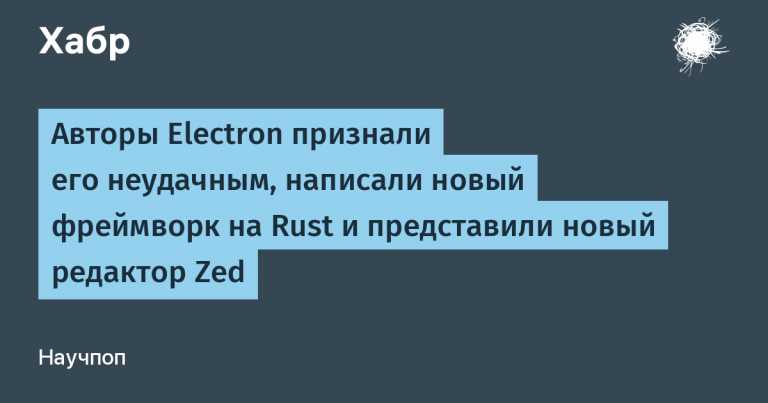from a Soviet lens to automated telescope control

What is astrophotography
This is a type of photography that focuses on the night sky, objects in the solar system, and deep space. The goals of astrophotography can be:
scientific. The study of processes and phenomena occurring in the Universe, such as the formation of stars, the evolution of galaxies, and theories about the origin and development of the Universe. The study and exploration of space objects – planets, stars, galaxies, and nebulae. The creation of catalogs and databases;
research. Discovery of new and supernovae stars, comets, asteroids;
artistic. Popularization of astronomy, education and admiration of the beauty of space.
The human eye has a weakness, which is the inability to accumulate light and see dim objects. Photography solves this problem, and thanks to the development of digital technology, astrophotography has become widely available. It is a great opportunity to discover the world of astronomy and get to know space better, capture its beauty and the diversity of distant natural objects.
How I became interested and came to this hobby
When I was a child, my home library had many books, including books on various sciences. I especially liked textbooks on physics, astronomy, and books from the “Entertaining Physics” and “Astronomy” categories. My grandfather had a pair of Soviet telescopes, and I sometimes tried to observe the Moon, Jupiter, and Saturn through them. But there were no such enthusiastic people or the Internet around me as there are now. And the exchange of experience and knowledge is necessary here. So then there was no development in this direction, the hobby had to wait for its time. But all the same, throughout my life, the topic of astronomy interested me.
A couple of times I thought about buying a telescope and continuing my childhood hobby. I studied the issue of telescopes, what you can see or photograph in them. But in the end, things didn’t go any further, since you need a car to go with a telescope to a place free from urban light pollution. And I didn’t even have a driver’s license. I was also not very impressed by what you can see with your eye in a telescope or photograph.
And I saw many beautiful photos in the genre of astro landscapes. At that time I had a mediocre camera, with which I tried to photograph the starry sky during trips outside the city or with tents. But I had no experience, the results were not very good.




I remember one story that probably started me seriously into astrophotography. 5-6 years ago I was walking in the park with my wife and periodically looked at Jupiter. At some point a man came up to me and asked what kind of star it was. I answered that it was not a star, but the planet Jupiter and then he was very happy – it turned out that this was a test on his part. He praised me and said that now few people know this.
Once again I went online to look and study this topic. I came across many beautiful photos taken through telescopes and regular long-focus lenses. It turned out that the community of astronomy enthusiasts is actively developing, and the equipment and software have begun to allow taking very good quality photos.
At that time I already had a driver's license and a car, as well as a place in a village near Kolomna where I could experiment. And I decided to try myself as an astrophotographer.
What technique did you use first?
Astrophotography is an expensive hobby to get into professionally, but you can get started with fairly inexpensive equipment.
I started with something simple. I shot with a middling mirrorless SONY camera. I also used Soviet lenses with it, which I bought for four thousand rubles. I used them to shoot my first comet, my first galaxy, my first star cluster.

All this applies to such a type of astrophotography as night landscape – various night scenes against the background of the starry sky, the Milky Way, meteor showers, comets, polar lights. This is probably the most popular type of astrophotography, since it is quite simple and has a minimal entry threshold. To begin with, the equipment required is a regular camera, a fast lens, a tripod and a program for processing RAW photos like Photoshop or Lightroom.


However, there are several key points to consider. First, a sufficiently dark sky is necessary. The problem of light pollution is a serious problem for astrophotographers of various disciplines, including landscape photography. It seriously complicates shooting and does not allow you to get a quality photo. Even outside the city, it can be difficult to find a suitable place to shoot the starry sky. In addition, to create a beautiful and exciting photo, you need the right composition of the frame and a good landscape. For example, with such elements as mountains, lakes, fields with sunflowers. Therefore, a landscape photographer must look for interesting places to shoot, go on hikes and travel in search of a suitable sky and picturesque landscapes. Of course, to begin with, it is worth starting with small forays outside the city to try your hand and gain experience.
Also, when shooting a night landscape, an astrotracker can be useful – special equipment that helps compensate for the rotation of the Earth during shooting. It is enough to simply hang a camera on it. Otherwise, with large focal lengths, all objects in the frames are blurred. If astrotrackers are used in tandem with a camera, then mounts are used for telescopes as more bulky structures.
I made my astrotracker myself from a cutting board. I also bought a 3D printer specifically to print parts for it. Electronics, soldering – I'm also interested in this, so I assembled and soldered everything myself. Also, being a programmer, I developed a control program that points the camera at various objects. I spent a year assembling and improving the design in my free time.



Thanks to the astrotracker, in 2020 I started shooting nebulae and galaxies, and with a newly purchased Soviet lens. You can get quite interesting results without investing much money.

Mount: Homemade astrotracker; Software: DeepSkyStacker, FITStacker, Lightroom;
Exposure: 70 x 20″ ISO: 800 – f5.6
250 x 30″ ISO: 1600 – f5.6
100 x 30″ ISO: 3200 – f5.6

Mount: Homemade astrotracker; Software: DeepSkyStacker, FITStacker, Lightroom;
Exposure: 200 x 30″ ISO: 1600 – f5.6
300 x 30″ ISO: 3200 – f5.6
70 x 60″ ISO: 3200 – f5.6

Mount: Homemade astrotracker; Software: DeepSkyStacker, FITStacker, Lightroom
Exposure: 350 x 30″ ISO/Gain: 1600 – f5.6
330 x 30″ ISO/Gain: 3200 – f5.6

Mount: Homemade astrotracker; Software: DeepSkyStacker, FITStacker, Lightroom
Exposure: 220 x 30″ ISO: 1600 – f3.5
15 x 60″ ISO: 1600 – f3.5
15 x 90″ ISO: 1600 – f3.5
30 x 30″ ISO: 1600 – f5
15 x 60″ ISO: 1600 – f5
15 x 90″ ISO: 1600 – f5
Using special programs for processing astrophotos, such as PixInsight, you can improve the result. But the program is paid. An example of processing M31 sources, but already in PixInsight, which I purchased at the end of 2021.
What is possible with astrocameras
Since 2021, I have been using astrocameras. These cameras are specially designed to shoot deep space objects. They are helped by a cooling mechanism – during a long exposure, the camera itself cools the heating matrix. One object, for example, a galaxy or nebula, can be shot for several nights. The more signal accumulated, the better. A long shutter speed allows you to accumulate light on the camera matrix, but the signal is still very weak and noisy.
To subtract extraneous noise and leave only the useful signal, many frames are taken and then they are all added together in special programs.
The shutter speeds can reach up to 30 minutes per frame, and the total shooting time is 200 hours. I usually use exposures from 2 to 5 minutes. And the maximum total accumulation for one object for me is 27 hours so far.
You will also need a laptop or mini-computer like Raspberry pi to use the astrocamera. I first shot using a laptop, and then bought a special mini-computer ZWO ASIAIR.
To photograph nebulae, especially in overexposed skies, you need to use special filters. I used Optolong L-eXtreme. This filter lets through the emission lines of alpha hydrogen (H-alpha) and doubly ionized oxygen (OIII).


Mount: Homemade astrotracker; Software: PixInsight, PS;
Exposure: 130 x 300″ Gain: 100, f5.6, -30C

Mount: Homemade astrotracker; Software: DeepSkyStacker, Siril, Lightroom, PS;
Exposure: 85 x 300″ Gain: 100, f5.6, -20C

Mount: DIY EQ mount; Software: PixInsight, PS
Exposure: 145 x 300″ Gain: 100, f5.6, -25C

Camera: ZWO ASI533MC Pro; Mount: Homemade astrotracker; Software: PixInsight, PS;
Exposure: 240 x 120″ Gain: 300, f5.6, 0C

Mount: Homemade astrotracker; Software: DeepSkyStacker, Siril, Lightroom, PS
Exposure: 70 x 300″ Gain: 100, f5.6, -30C
40 x 30″ Gain: 100, f8, -30C
The image below is notable for the fact that the maximum was squeezed out of a Soviet lens and a homemade astrotracker using modern processing technologies. Only for shooting hydrogen (red areas) a modern lens was used.

Exposure: 186 x 300″ ISO/Gain: 100 – f5.6, -25C
65 x 30″ ISO/Gain: 100 – f8, -25C
36 x 300″ ISO/Gain: 120 – f4.6, Optolong Ha 7nm, -20C
How I take pictures now
At the end of 2022, I bought a Sky-Watcher 200PDS telescope, a Sky-Watcher EQ6-R Pro mount, and additional accessories: filters, a filter wheel, and a guide. This telescope has a focal length of 1 meter, so you can look further and shoot more distant galaxies and smaller nebulae. It also opens up the possibility of shooting the Moon and planets, which you can’t do with a lens.


Camera: ZWO ASI294MM Pro; Mount: Sky-Watcher EQ6-R Pro; Software: PixInsight, PS;
Exposure: 60 x 300″ Optolong Ha 7nm
55 x 300″ Optolong Oiii 6.5nm

Camera: ZWO ASI294MM Pro; Mount: Sky-Watcher EQ6-R Pro; Software: PixInsight, PS
Exposure: 18 x 300″ ISO/Gain: 120 – Optolong Ha 7nm
14 x 300″ ISO/Gain: 120 – Optolong Oiii 6.5nm

Camera: ZWO ASI294MM Pro; Mount: Sky-Watcher EQ6-R Pro; Software: PixInsight, PS
Exposure: 400 x 30″ ISO/Gain: 0
I also bought a special lens for astrophotography, Askar FMA230.


Lens: Askar FMA230; Camera: ZWO ASI294MM Pro;
Mount: Sky-Watcher EQ6-R Pro; Software: PixInsight, PS
Exposure: 48 x 300″ ISO/Gain: 120 – Optolong Ha 7nm
22 x 300″ ISO/Gain: 120 – Optolong Oiii 6.5nm

Mount: Sky-Watcher EQ6-R Pro; Software: PixInsight, PS
Exposure: 47 x 300″ ISO/Gain: 120 – Optolong Ha 7nm
20 x 600″ ISO/Gain: 120 – Optolong Oiii 6.5nm
We also use a telescope to shoot planets, the Moon and the Sun, but with a different astrocamera and a different set of accessories. We also change the shooting and processing process – we shoot planets and other objects of the Solar System with a special camera in a fast video format. This is all due to the Earth's atmosphere – it distorts and blurs the resulting materials. The effect can be compared to heat waves from a heated surface. The same thing happens with the pictures.

Camera: ZWO ASI462MC; Mount: Sky-Watcher EQ6-R Pro; Software: AutoStakkert, PixInsight, PS

Camera: ZWO ASI462MC; Mount: Sky-Watcher EQ6-R Pro; Software: AutoStakkert, PixInsight

Camera: ZWO ASI462MC; Mount: Sky-Watcher EQ6-R Pro; Software: AutoStakkert, PixInsight
The resulting video is first converted into a set of frames, from which the program selects the clearest ones and then summarizes them into a clear picture. However, even taking into account modern advanced technology, it is quite difficult to photograph planets.
For example, Venus is covered by clouds, which creates problems for developing photographs. Special ultraviolet filters are needed, without which it will appear as an ordinary ball.


Jupiter is one of the most interesting planets to photograph. You can see the cloud structure and the famous Red Spot, the largest atmospheric vortex in the solar system.


I even photographed the most distant planets. But they have few details and are very far away, so they look like small balls. But it was still interesting to photograph them.

The Sun was also photographed. By the way, it is actually white, but for the photo the star is tinted in a more familiar color to us, like a yolk. This is done in a special program during processing. To photograph and observe the Sun through a telescope, astrophotographers use a special aperture filter – it reduces the light flux and saves from damage to equipment (and vision, too).
Through a regular telescope we can see only sunspots and granulation in the photosphere of the Sun. There are special solar telescopes through which the chromosphere of the Sun is visible. In this narrow H-alpha band the Sun looks very beautiful and dynamic – you can photograph prominences and their movement. But such telescopes are very expensive.


Collages
Many people think that since nebulae and galaxies are something extremely distant, large telescopes are required to photograph them. This is true for most galaxies, but there are exceptions. For example, the Andromeda Galaxy (M31) is 6 times larger than the Moon in the sky. Planets are generally very small, and you cannot do without long-focus optics, but nebulae, on the contrary, in most cases have large visible angular sizes.
To clearly show the apparent sizes of the planets of the Solar System and deep space objects, I have prepared special collages. and “Collage comparison of the apparent sizes of the Moon and deep space objects”.



Thanks for reading!
In the next article I will describe in detail how to work with filters when photographing nebulae and share tips for beginners.





